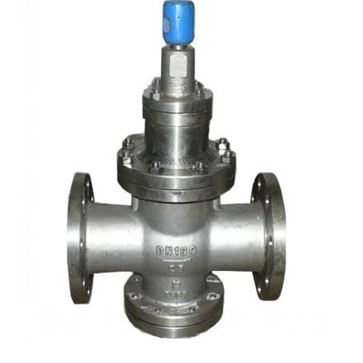 It should be said that the pressure reducing valve is a relatively complicated valve and has a complicated structure. The valve inside the valve (two valves with different functions in one valve and the main valve) must be detailed to understand their structure and related effect. The current most commonly used domestic y43h series piston pressure reducing valve and imported pilot valve type pressure reducing valve are taken as examples for comparison and introduction.
It should be said that the pressure reducing valve is a relatively complicated valve and has a complicated structure. The valve inside the valve (two valves with different functions in one valve and the main valve) must be detailed to understand their structure and related effect. The current most commonly used domestic y43h series piston pressure reducing valve and imported pilot valve type pressure reducing valve are taken as examples for comparison and introduction. 1.1 The main structure and related differences From the figure we can see that, whether domestic or imported, although the structure is different, but are adjusted by the spring component, the pilot valve assembly, the main valve assembly and the adjustment channel consists of four major components.
1.1.1 Adjust the spring assembly and pilot valve assembly: In addition to the difference in the shape of the spool of the pilot valve (one is a frustum, the other is a sphere) is almost the same.
1.1.2 Main valve assembly: The structure is completely the opposite. The valve plug of the domestic main valve is arranged below the valve seat, the inlet direction is low and high, and it is transverse s-shape;
The main valve of the imported main valve is arranged on the upper side of the valve seat, and the inlet direction is high and low, and it is an anti-horizontal s-shape.
1.1.3 Pressure regulation channels (α, β, γ in Figure 1, a, b, c in Figure 2) Layout Different domestically produced valve pressure regulating channels are preset inside the valve body (inside type), inlet valve pressure The adjustment channels are all connected to the outside of the valve body using a copper tube (external type).
1.1.4 The function difference of β channel and b channel The domestic β channel is directly from the annular cavity of the pilot valve to the upper cavity of the piston cylinder below, only the connection function.
The inlet b-channel is a valve body (a very fine hole) that is connected from the main steam supply channel to the downstream outlet. This channel has a special function. It not only makes a pressure difference with the main diaphragm lower chamber, but also helps the main diaphragm. The movement of the sheet can also drain away part of the residual pressure steam and condensed water to the downstream outlet pipe section, which is more conducive to the rapid closure of the main valve.
v Domestic valves, as long as the pilot valve is opened, the condensate will quickly enter the upper annular chamber of the pilot valve from the α channel, the β channel and the upper chamber of the piston cylinder. As the piston descends, the condensate water accumulates more and more. Until the piston reaches the bottom dead point, the cylinder becomes a "water tank" during this process. Domestic valves, due to the structural characteristics of the water volume is relatively small, so as long as a small amount of condensed water can fill these parts.
Inlet valve, when the pilot valve is opened, condensate is generally deposited in the cylinder, piston cylinder upper chamber and the main diaphragm under the main valve movement of the main valve mechanism, and the β, a, b channel pressure transmission system. It can be seen that due to the characteristics of the structure of the pressure reducing valve, the accumulation of condensed water in the valve is inevitable, and it is the core part of the valve work.
From the working principle of the pressure reducing valve to analyze the destruction of the condensate to the regulation function of the voltage regulator, it is necessary to further discuss the influence of the condensate on the voltage regulator regulating function. First of all, it is necessary to understand the working principle and the relationship between the pressure reducing valve.
2.1 The working principle of the domestic pressure relief valve The pilot valve is opened by the clockwise adjustment of the top adjustment bolt, so that the contraction spring generated by the elastic, so that the pilot valve diaphragm depression, the role of force on the pilot valve connecting rod , Move it down to open the pilot valve. When the pilot valve is opened, the steam in the cavity a of the upstream steam inlet pipe passes through the α channel (supply adjustment channel), passes through the pilot valve and enters the pilot valve annular cavity, and is directly sent from the β channel to the upper piston cylinder cavity. In the continuous supply of a-cavity steam, the pressure continues to rise, pushing the piston down to open the main valve, at which time the steam flows continuously from the a-cavity to the b-cavity. When the load of the downstream outlet pipe b satisfies the requirement, more steam will increase the pressure in the b-cavity. The increasing pressure is fed back through the gamma channel (pressure sensing channel) to the lower diaphragm of the pilot valve diaphragm so that the pilot valve diaphragm protrudes upwards, overcoming the pressure of the upper regulating spring, and the pilot valve is closed or closed. Thus, turning off or shutting off the steam source from the upstream alpha channel. When the pressure in the upper chamber of the piston cylinder drops, the main valve is closed or closed under the action of the lower return spring. At this time, the pressure in the chamber b begins to fall, so that the purpose of pressure regulation is achieved in a cyclic manner.
2.2 Working principle of the inlet pressure reducing valve When the pilot valve is opened, it can be seen from Fig. 2 that the steam in the a cavity of the upstream pipe section enters the inner filter housing rapidly and reaches the a channel (supply regulation channel) through the pilot valve, when the a channel After being filled with steam, it is directly sent to the diaphragm of the main valve diaphragm, and a part of the steam is diverted into the b cavity through the b-channel (pressure control channel). The diaphragm of the main valve diaphragm is continuously supplied by the steam in the a-channel. The pressure of the main cutting diaphragm protrudes upwards. The thrust generated pushes up the main valve stem to open the main valve, and the same steam is continuously flowing from the a cavity to the b cavity. . When the downstream outlet pipe section load is satisfied, the excess steam also causes the pressure in the b cavity to increase continuously. The increasing pressure is transmitted to the pilot valve diaphragm cavity through the c channel (pressure sensing channel). When the diaphragm of the pilot valve protrudes upwards, the pressure of the upper regulating spring is overcome, the pilot valve is closed or closed, and steam from the a chamber is reduced and cut off. When the main valve diaphragm cavity pressure gradually reduced, the upper main valve spring action, so that the main cut valve back seat, the main valve is closed or closed (excess steam at the same time through the b channel released into the b cavity, the main valve was Quickly close), so that the pressure in the b cavity constantly decreases, so as to achieve regulation. (The principle of pilot valve opening is the same for imported valve and domestic valve.)
2.3 Analysis of condensate water destruction regulator regulation mechanism When the downstream pressure rises (in the b-cavity), the pressure is adjusted downward. Under normal circumstances, the high pressure of the b-cavity is transmitted to the pilot valve through the pressure sensing channel (γ), so that the pilot valve is closed or closed, thereby shutting down and cutting off the steam source from the a cavity. When the condensed water intrudes into the cylinder and annular cavity, due to the incompressible nature of the water, the main valve return spring completely loses its function, the piston cannot go up, the main valve cannot be closed, and the steam at the inlet (a cavity) is still continuous. The main valve through the normally open state flows into cavity b. To make the pressure high and out of control. As an example, look at the inlet valve (see Figure 2) when the system condensate fills the a, b channels and the main diaphragm subchamber. From the thrust of the steam in the cavity a, the main valve diaphragm is in an upwardly bulging state. Similarly, the water incompressible characteristic makes the upper return spring unable to return to the seat, and the main valve is also in the normally open state, and the stability adjustment function is destroyed.
Here, it should be emphasized that although the pressure reducing valve is a proportional regulating valve, when the condensed water fills the core working parts of the valve, the proportional adjustment property completely changes, and the key issue is the friction of the moving parts. The role of resistance and the time difference between the sequence of actions determine the hysteresis of the main valve movement. (The pilot valve moves first and the main valve trails behind.) When receiving overpressure messages from the γ and c channels, first, turn off the pilot valve or close the pilot valve. In this way, the retreat of the condensate in the valve is cut off. Obviously, the piston and the main valve diaphragm cannot move.
Based on the above analysis and discussion, it is clear that the system condensate is not beneficial to heating engineering. From this conclusion, the system condensate is the most basic reason to destroy the function of regulating the pressure regulator of the steam relief valve.
The system condensate water is the only source in the process of writing this article. A colleague proposed that whether or not the pressure reducing valve will generate condensate during the heat exchange of its own work process? This question is raised, so that we have to consider whether the internal pressure relief valve is also The problem of condensed water will be solved, so it is necessary to understand the thermal state of the working process of the pressure reducing valve. In order to explain the problem more visually and intuitively, we intend to analyze it by using the lgp-i graph to see if there are pressure changes, there will be an answer to the changes in their relevant state parameters.
Assume that the upstream inlet pressure is (pre-valve) p1, the downstream outlet pressure is p2, and p1 intersects the dry saturated steam line at o1 along the iso-line. The downstream outlet pressure p2 intersects the iso-line at o2. When the pressure drops from p1 to p2, other relevant parameters also change accordingly.
From Figure 3, it can be seen that the pressure decreases from p1 to p2 along the iso-line, so there is no change, but the entropy increases from s1 to s2, and the specific volume also increases from v1 to v2, but the temperature drops from t1 to t2.
From this point of view, the flow of steam through the pressure reducing valve should be considered as an adiabatic throttling process. This adiabatic throttling process is an irreversible adiabatic expansion and other helium flow processes. After the steam throttling, the enthalpy value remained unchanged, the specific volume and entropy increased, and the temperature decreased slightly. After the steam passes through the pressure reducing valve, it will not only produce no condensate, but also the steam dryness. It can be said that the condensate is generated from the system and is unique. In this way, the measures for preventing and reducing the condensate water from entering the pressure reducing valve also become simple.
Measures and methods 4.1 Condensate in the pipeline to exclude a good practice steam heat source to the various terminals, along the range of tens of meters, as many as several hundred meters or more, plus some intermittent use of steam equipment, Steam pipelines are constantly heat-exchanged with the environment, and the removal of this part of the condensate water is usually solved using segmented water repellency. How is the effect? From Fig. 4, we can see that since the diameters of the hydrophobic pipes we use are all relatively small, it is conceivable that when the steam flow rate in the pipes is between a dozen and tens of meters per second, the actual situation is how much the condensed water is not discharged. It has been washed through the hydrophobic spout. This traditional practice has low drainage efficiency and is not ideal.
A section of condensed water short pipe is installed between the gas transmission main pipe and the water drainage pipe, and the pipe diameter is coarse, and the water collection capacity is strong. The water drainage pipe is drawn from the waist of the water condensation short pipe to form the water seal steam and is not easy to escape. The ratio of the diameter of the condensing water pipe to the steam conveying pipe is recommended to be 1/2~2/3. Such as the dn100 diameter of the steam supply pipe, condensed water squeezing the diameter of the short tube can choose 50~80 caliber. This method has a large amount of displacement and is effective. At present, methods commonly used abroad are worth learning from.
4.2 Decompression Device The setting of the steam-water separator is very important. Adding a steam separator can ensure the supply of dry steam to the maximum extent. The service life of the pressure-relief device is an important safeguard measure. The author designed a kind of steam separator based on the principle of gravity separation and doubt, and the actual use effect is not bad, for reference only.
Looking at the foreign separator products, the principle of gravity, resistance coagulation, centrifugal. Formally, there are horizontal, vertical, variety, complete specifications. However, no products are currently available in the domestic market. Most of the products used today are foreign products. (expensive, prohibitive)
Condensate retention is a disadvantage to a steam heating system. Therefore, there are many things that can be done in the research and development of the steam separator.
4.3 Several Problems in the Design of Pressure Relief Devices:
(1) A separate discharge port must be provided at the lower end of the condensate discharge port of the steam separator for drainage when the equipment is started.
(2) Bypass settings are best placed above the relief valve or in parallel.
(3) The steam filter is installed close to the pressure relief valve.
(4) The flow rate of the pressure reducing valve should be selected properly, and the steam consumption of the equipment must be accurately calculated. The author's experience, the flow rate of the relief valve should be 10 ~ 20% larger than the equipment steam consumption is appropriate, do not appear "the situation of large horse-drawn cars", otherwise, have an impact on the stability of decompression conditions.
Shanghai famous brand products, Shanghai famous brand. The country's leading and largest manufacturers and suppliers of general valves such as gate valves, ball valves, butterfly valves, balancing valves, regulating valves, and hydraulic control valves. We will be more loyal to provide you with better service, we will do better. We are determined to become a world-class leading valve manufacturer!
Breif Introduction of Biomass Pellet Mill:
ROTEXMASTER New designed vertical double Ring Die Pellet Machine from us is designed ,developed and manufactured by our factory, it have the special appearance, more reasonable structure and stability, mainly for sawdust, rice husk, peanut shell, bamboo shavings, palm fiber and other materials.
Features of Biomass Pellet Mill:
1.High automation, No need to take care.
In the process of operation, the control panel, tablet computer and mobile APP can be used to monitor the temperature of critical parts and the electric current of the equipment.
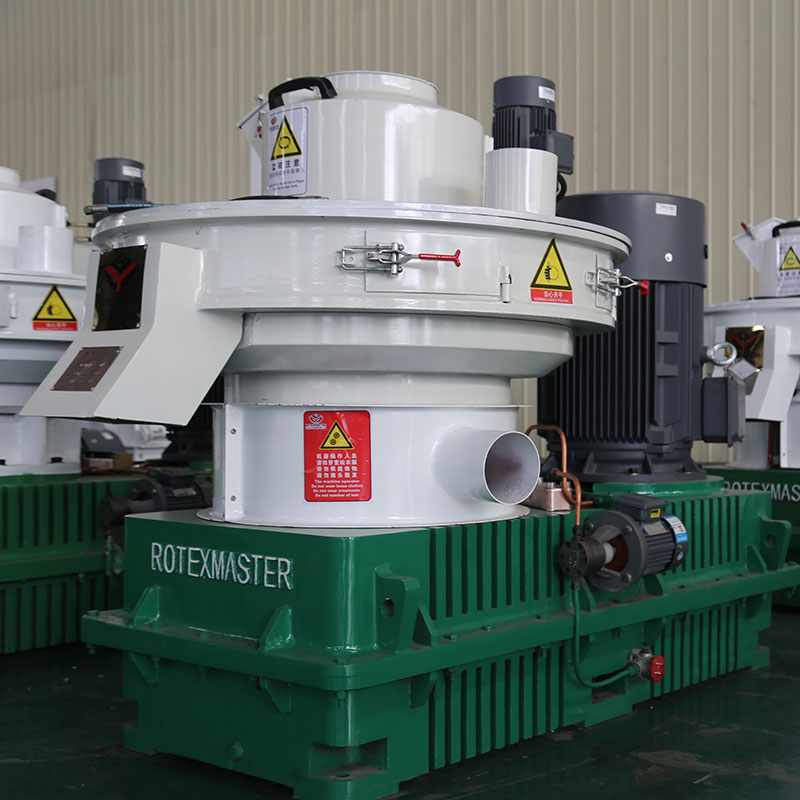
2.Independent lubrication and non-independent lubrication can be switched.
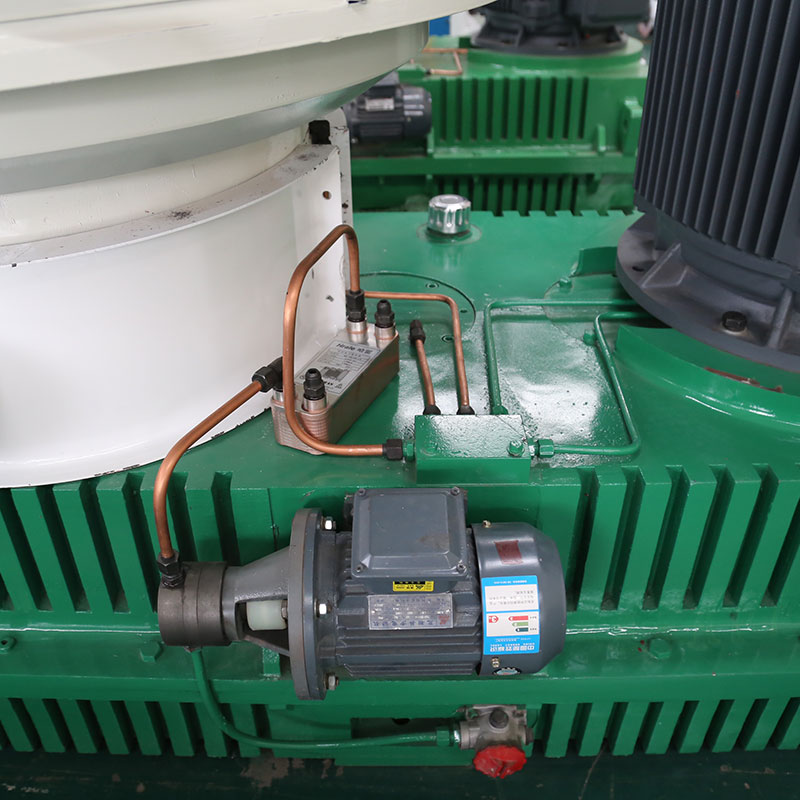
3.Reducer drive strengthen.
The gearbox adopts independent research and development big gear with 3 level drive , module increased , gear strengths increased , The gears in gearbox quality assurance for five years.
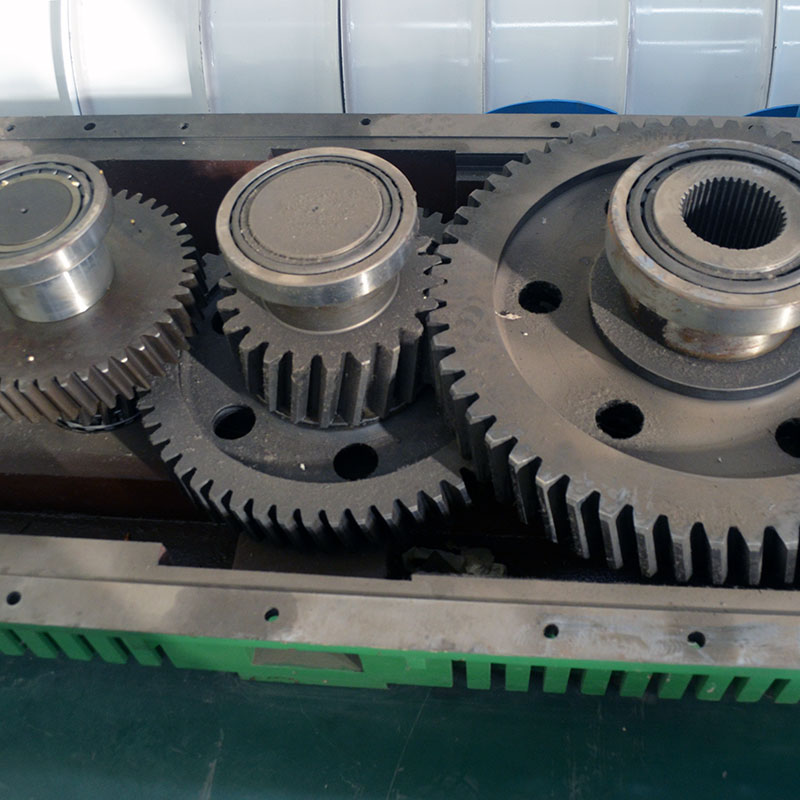
4.Die: stainless steel,with high wear resistance and high capacity.
Die of Biomass Pellet Machine adopt integral carburizing stainless steel, high wear resistance, good stability, discharge area increase, enhance the capacity and reduce cost.
Technical Parameter of Biomass Pellet Mill:
|
Model |
Power(kw) |
Diameter(mm) |
Capacity(t/h) |
Measurement(mm) |
Weight(T) |
|
YGKJ560 |
90+1.5+0.37+1.5 |
4-12 |
1-1.5 |
2600*1300*2300 |
5.8 |
|
YGKJ680 |
160+1.5+0.37+1.5 |
4-12 |
1.5-2.5 |
3300*1500*2300 |
8.5 |
|
YGKJ850 |
220+3+0.37+2.2 |
4-12 |
2.5-3.5 |
3800*1830*3080 |
15 |
Details of Biomass Pellet Mill Machine:
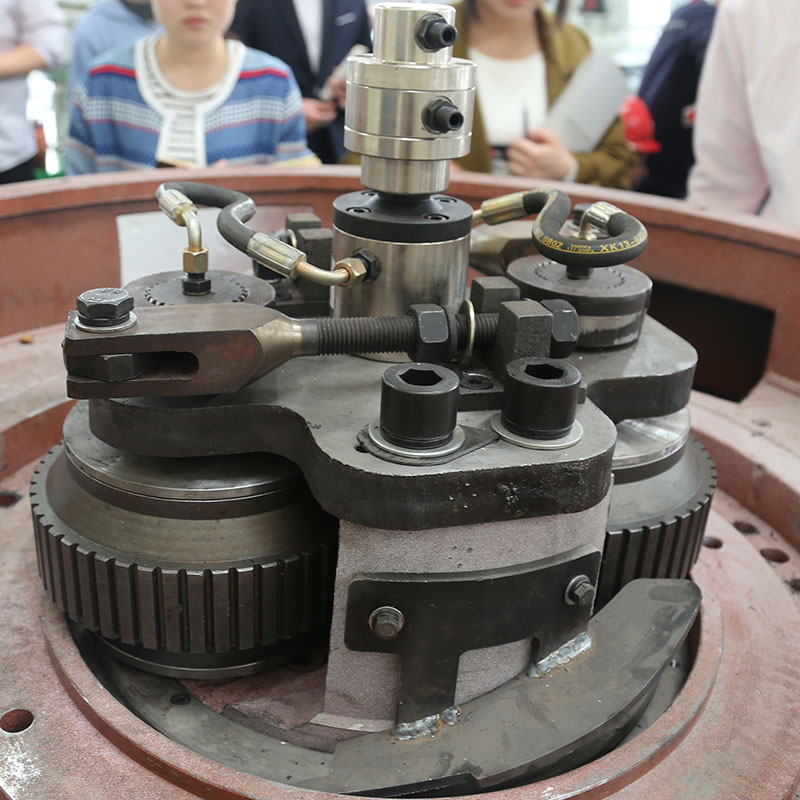
Customer Cases of Biomass Pellet Mill:
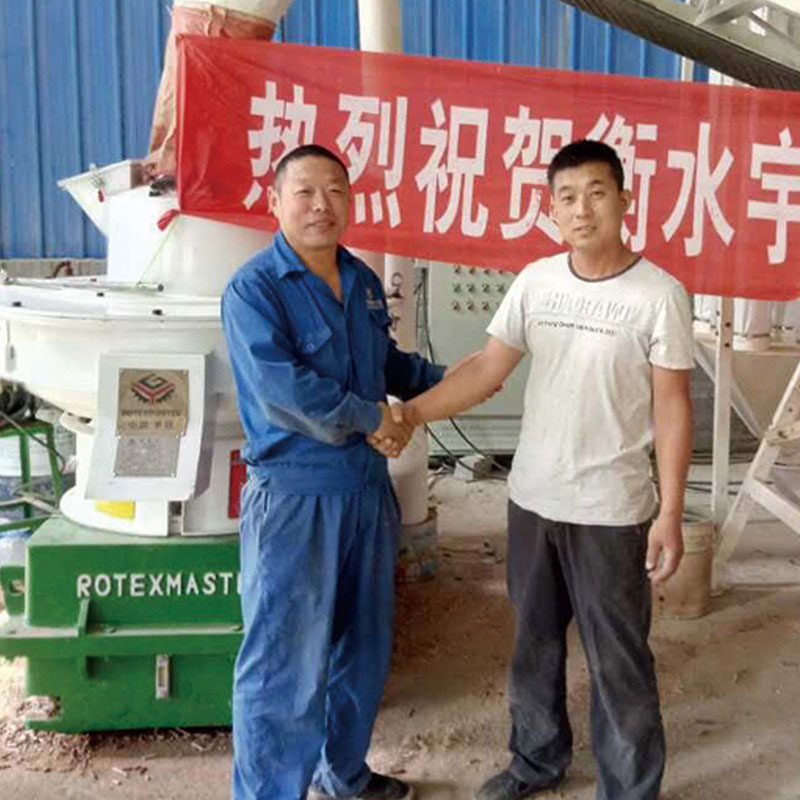
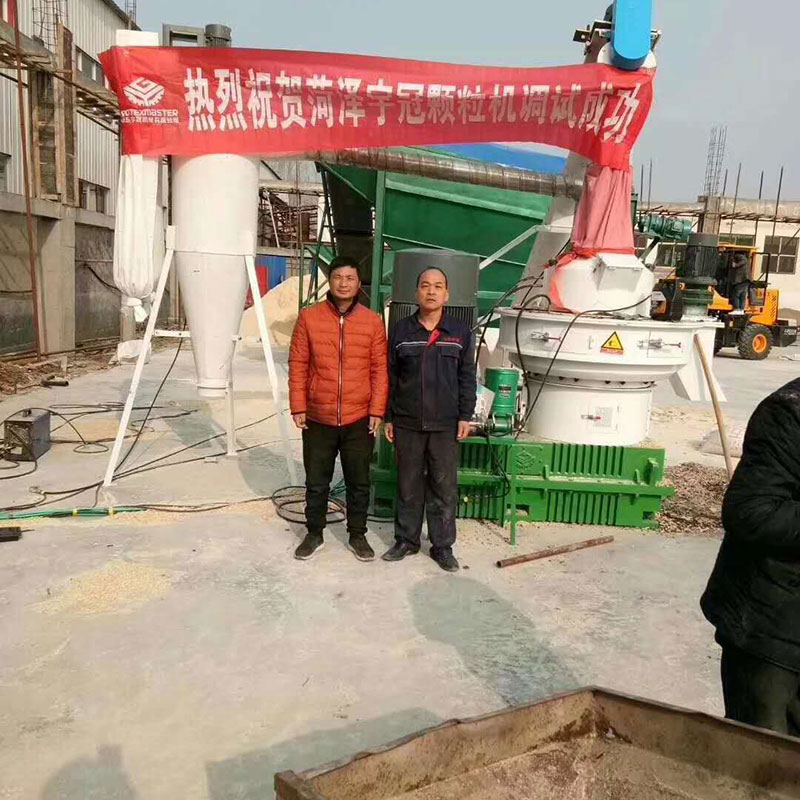
Biomass Pellet Mill
Biomass Pellet Mill,Rice Husk Pellet Mill,Rice Husk Biomass Pellet Mill,Wood Biomass Pellet Mill
Shandong Rotex Machinery Co.,Ltd , http://www.woodpelletmachinery.com
![<?echo $_SERVER['SERVER_NAME'];?>](/template/twentyseventeen/skin/images/header.jpg)